Pagebrain
Models by this creator
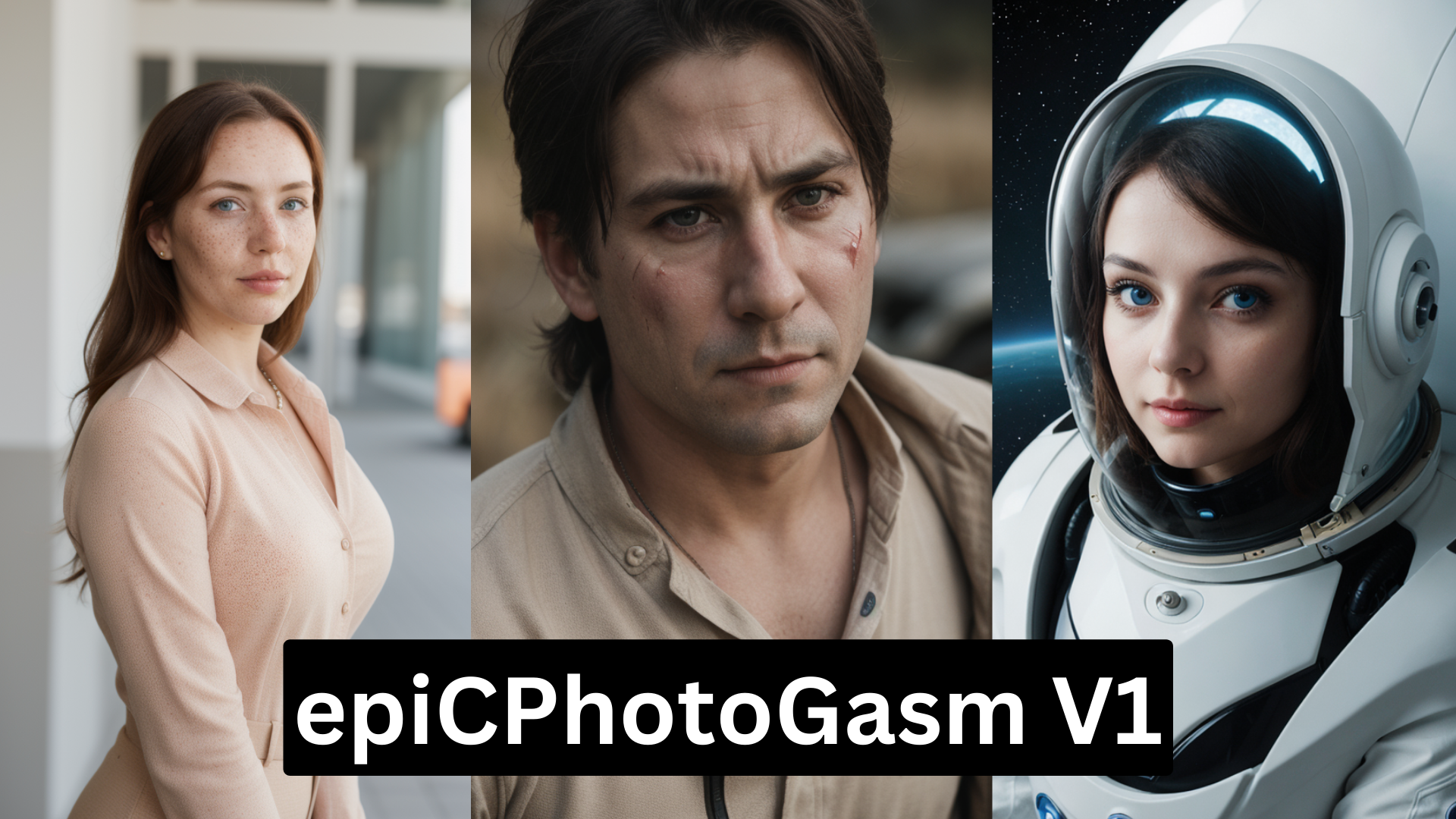
epicphotogasm-v1
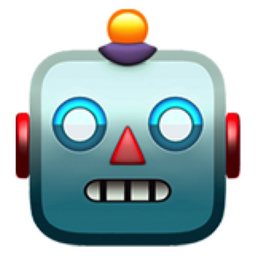
57
epicphotogasm-v1 is a powerful AI model created by pagebrain that excels at generating high-quality, realistic images. This model builds upon pagebrain's previous work with models like epicrealism-v2 and dreamshaper-v8, incorporating features like negative embeddings, inpainting, and a safety checker to produce stunning results. Model inputs and outputs epicphotogasm-v1 takes a variety of inputs, including a prompt, an optional input image for img2img or inpainting, and various settings such as the number of outputs, guidance scale, and safety check. The model outputs an array of image URLs, allowing you to easily access the generated images. Inputs Prompt**: The text prompt that describes the desired image Image**: An optional input image for img2img or inpainting mode Mask**: An optional mask image to specify areas for inpainting Seed**: A random seed value to control the image generation Width/Height**: The desired dimensions of the output image Num Outputs**: The number of images to generate Guidance Scale**: The scale for classifier-free guidance Num Inference Steps**: The number of denoising steps to perform Negative Prompt**: Specify things to avoid in the output Outputs Array of image URLs**: The generated images Capabilities epicphotogasm-v1 is capable of producing strikingly realistic and detailed images across a wide range of subjects and styles. The model's strong performance in areas like img2img and inpainting make it a versatile tool for both image generation and editing. What can I use it for? epicphotogasm-v1 is well-suited for a variety of creative and commercial applications. You could use it to generate concept art, product visualizations, or even photorealistic landscapes and scenes. The model's inpainting capabilities also make it useful for tasks like object removal, background replacement, and image restoration. Things to try One interesting aspect of epicphotogasm-v1 is its ability to incorporate negative embeddings, which allows you to exclude specific elements from the generated images. This can be particularly useful for avoiding unwanted content or adding a unique stylistic twist to your creations. Additionally, the model's safety checker can help ensure that your images are appropriate for their intended use.
Updated 9/18/2024
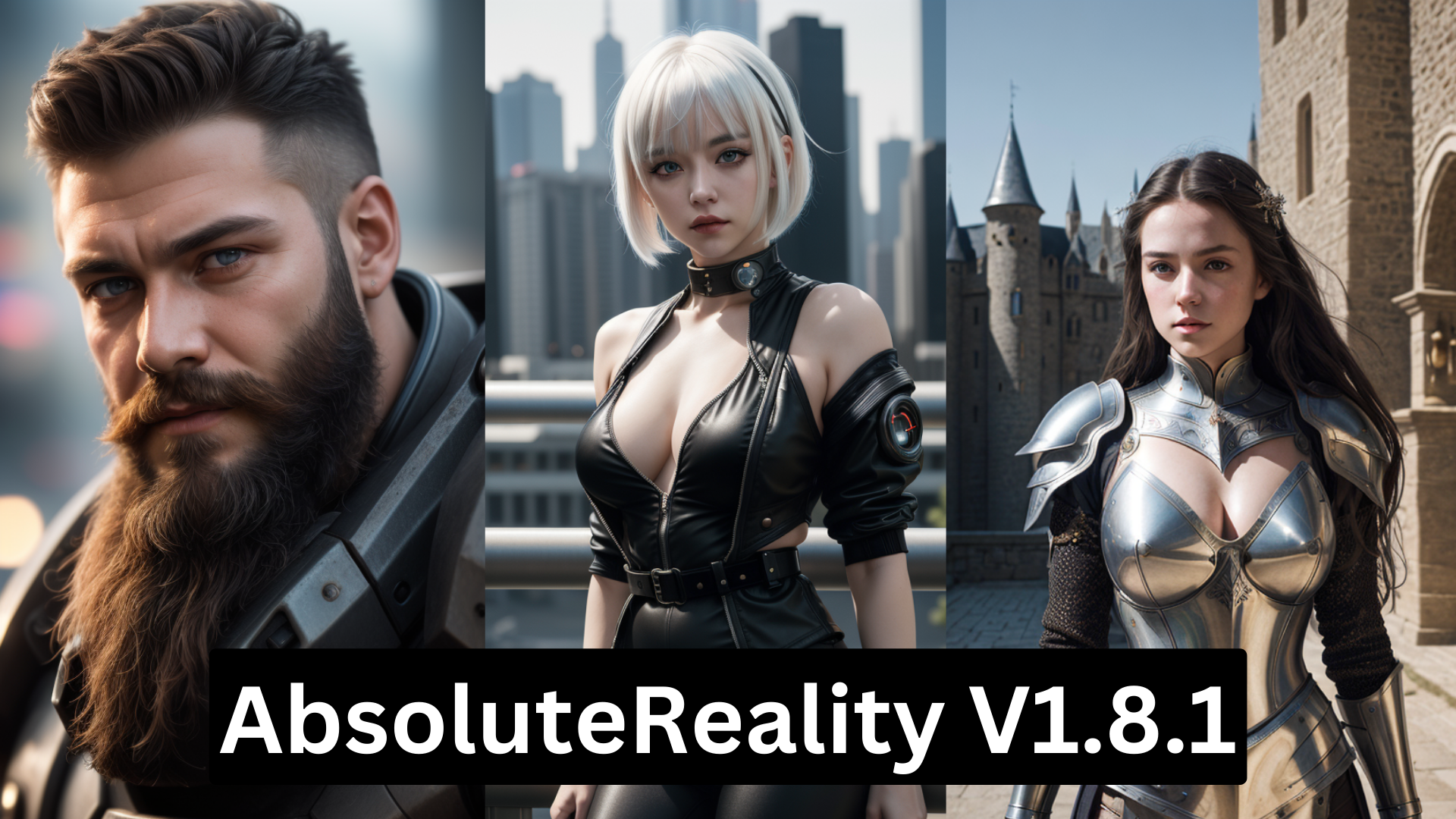
absolutereality-v1-8-1

20
The absolutereality-v1-8-1 model is a text-to-image AI model developed by pagebrain. It is a variation of the Stable Diffusion model, with a focus on generating realistic and detailed imagery. The model utilizes a T4 GPU, negative embeddings, and techniques like img2img and inpainting to produce high-quality images. It is similar to other pagebrain models like dreamshaper-v8, epicrealism-v4, epicphotogasm-v1, epicrealism-v5, and realistic-vision-v5-1, all of which share these key features. Model inputs and outputs The absolutereality-v1-8-1 model accepts a variety of inputs, including a text prompt, an optional input image for img2img or inpainting, and various settings like the image size, number of outputs, and guidance scale. The model can generate up to 4 output images based on the provided inputs. Inputs Prompt**: The text prompt that describes the desired image. Negative Prompt**: Specifies things to not see in the output, using supported embeddings like realisticvision-negative-embedding, BadDream, EasyNegative, and others. Image**: An optional input image for img2img or inpainting mode. Seed**: A random seed value, which can be left blank to randomize. Mask**: An optional input mask for inpainting mode, with black areas preserved and white areas inpainted. Width/Height**: The desired width and height of the output image, up to a maximum of 1024x768 or 768x1024. Prompt Strength**: The strength of the prompt when using an input image, with 1.0 corresponding to full destruction of the input image. Num Outputs**: The number of images to generate, up to a maximum of 4. Guidance Scale**: The scale for classifier-free guidance, which controls the balance between the prompt and the model's learned priors. Num Inference Steps**: The number of denoising steps to perform, up to a maximum of 500. Safety Checker**: A toggle to enable or disable the safety checker, which filters out potentially unsafe content. Outputs Image**: The generated image(s) in URI format. Capabilities The absolutereality-v1-8-1 model is capable of generating high-quality, realistic images based on text prompts. It can also perform img2img and inpainting tasks, allowing users to generate new images based on existing ones or to fill in missing or damaged areas of an image. The model's use of negative embeddings and safety checking helps to ensure that the generated images are appropriate and free of undesirable content. What can I use it for? The absolutereality-v1-8-1 model can be used for a variety of creative and commercial applications, such as generating concept art, product visualizations, and photo-realistic scenes. Its versatility and attention to detail make it a valuable tool for artists, designers, and anyone looking to create high-quality, visually striking imagery. Companies may also find use for the model in areas like advertising, marketing, and product development, where compelling visuals are essential. Things to try One interesting aspect of the absolutereality-v1-8-1 model is its ability to generate images with a strong sense of realism and attention to detail. Users may want to experiment with prompts that challenge the model to depict intricate scenes, such as detailed landscapes, intricate machinery, or realistic human subjects. The model's inpainting capabilities also offer opportunities to explore more complex image editing and manipulation tasks, such as repairing damaged photographs or seamlessly incorporating new elements into existing images.
Updated 9/18/2024
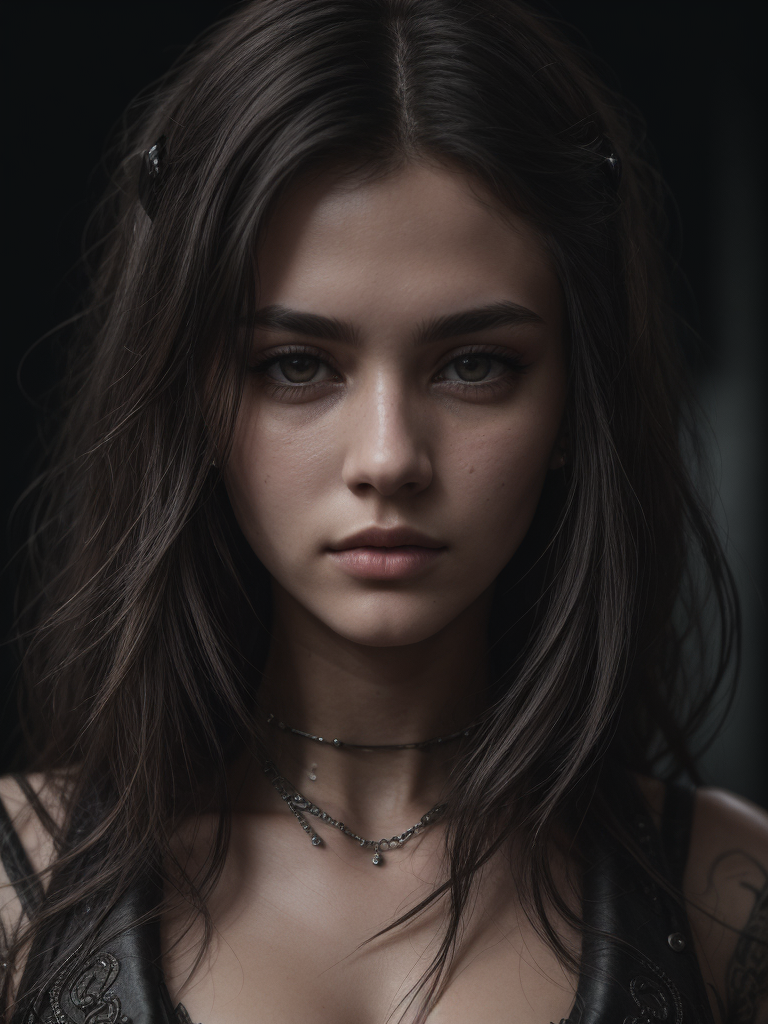
icbinp-seco

14
icbinp-seco is a text-to-image AI model developed by pagebrain. It is similar to other models created by pagebrain, such as dreamshaper-v8, dreamshaper-v7, epicphotogasm-v1, deliberate-v3, and epicrealism-v2. These models share common capabilities like negative embeddings, img2img, inpainting, and safety checking. Model inputs and outputs icbinp-seco is a text-to-image AI model that takes in a text prompt and generates corresponding images. It can also perform image-to-image tasks like inpainting, where the model fills in missing or damaged areas of an input image. Inputs Prompt**: The text prompt that describes the desired image Image**: An input image for img2img or inpainting mode Mask**: A mask image for inpainting mode, where black areas will be preserved and white areas will be inpainted Seed**: A random seed value to control the image generation Negative Prompt**: Words or phrases to avoid in the output image Prompt Strength**: The strength of the input prompt when using an init image Scheduler**: The algorithm used for image generation Safety Checker**: A toggle to enable or disable the safety checker Outputs Image(s)**: One or more generated images based on the input prompt Capabilities icbinp-seco can generate a wide variety of images based on text prompts, from realistic scenes to fantastical and imaginative creations. It also supports image-to-image tasks like inpainting, where the model can fill in missing or damaged areas of an input image. What can I use it for? icbinp-seco can be a powerful tool for creative projects, such as generating concept art, illustrations, or even full-fledged images for commercial use. The inpainting capabilities could also be useful for tasks like photo restoration or object removal. As with any text-to-image model, it's important to consider potential biases and safety concerns when using the model, which is why it includes a safety checker that can be enabled or disabled as needed. Things to try One interesting aspect of icbinp-seco is its support for negative embeddings, which allow you to specify things you don't want to see in the output image. This can be useful for avoiding unwanted elements or creating more targeted and specific images. You can experiment with different negative prompt phrases to see how they affect the generated output.
Updated 9/18/2024
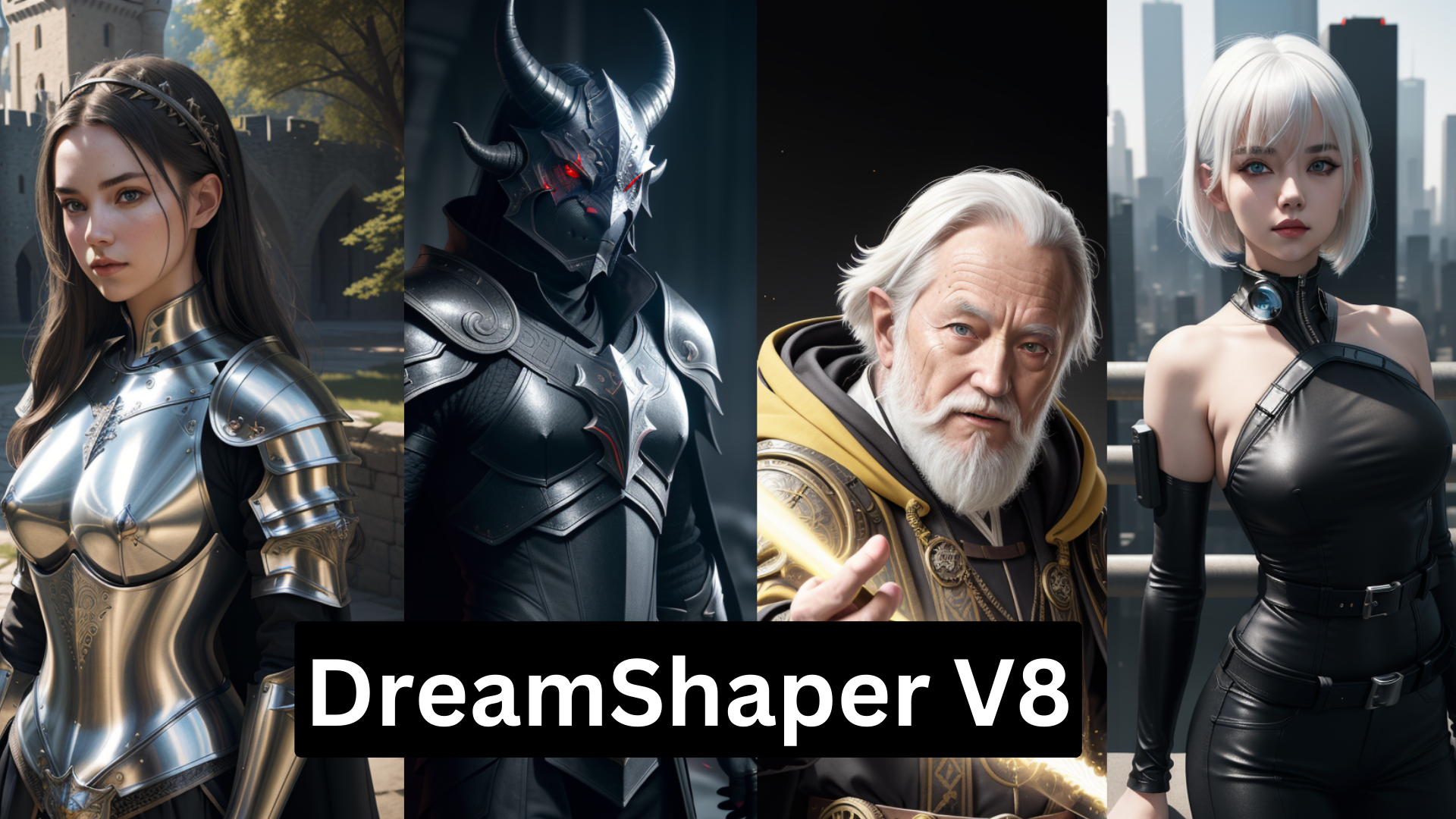
dreamshaper-v8

9
dreamshaper-v8 is a Stable Diffusion model developed by pagebrain that aims to produce high-quality, diverse, and flexible image generations. It leverages a variety of techniques like negative embeddings, inpainting, and safety checking to enhance the model's capabilities. This model can be compared to similar offerings like majicmix-realistic-v7 and dreamshaper-xl-turbo, which also target general-purpose image generation tasks. Model inputs and outputs dreamshaper-v8 accepts a variety of inputs, including a text prompt, an optional input image for img2img or inpainting, a mask for inpainting, and various settings to control the output. The model can generate multiple output images based on the provided parameters. Inputs Prompt**: The text description of the desired image. Image**: An optional input image for img2img or inpainting tasks. Mask**: An optional mask for inpainting, where black areas will be preserved, and white areas will be inpainted. Seed**: A random seed value to control the output. Width/Height**: The desired size of the output image. Num Outputs**: The number of images to generate. Guidance Scale**: The scale for classifier-free guidance. Num Inference Steps**: The number of denoising steps. Safety Checker**: A flag to enable or disable the safety checker. Negative Prompt**: Attributes to avoid in the output image. Prompt Strength**: The strength of the prompt when using an input image. Outputs The generated image(s) as a URI(s). Capabilities dreamshaper-v8 can perform a range of image generation tasks, including text-to-image, img2img, and inpainting. The model leverages various techniques like negative embeddings and safety checking to produce high-quality, diverse, and flexible outputs. It can be used for a variety of creative projects, from art generation to product visualization. What can I use it for? With its versatile capabilities, dreamshaper-v8 can be a valuable tool for a wide range of applications. Artists and designers can use it to generate unique and compelling artwork, while marketers and e-commerce businesses can leverage it for product visualization and advertising. The model's ability to perform inpainting can also be useful for tasks like photo editing and restoration. Things to try One interesting aspect of dreamshaper-v8 is its use of negative embeddings, which can help the model avoid generating certain undesirable elements in the output. Experimenting with different negative prompts can lead to unexpected and intriguing results. Additionally, the model's img2img capabilities allow for interesting transformations and manipulations of existing images, opening up creative possibilities.
Updated 9/18/2024
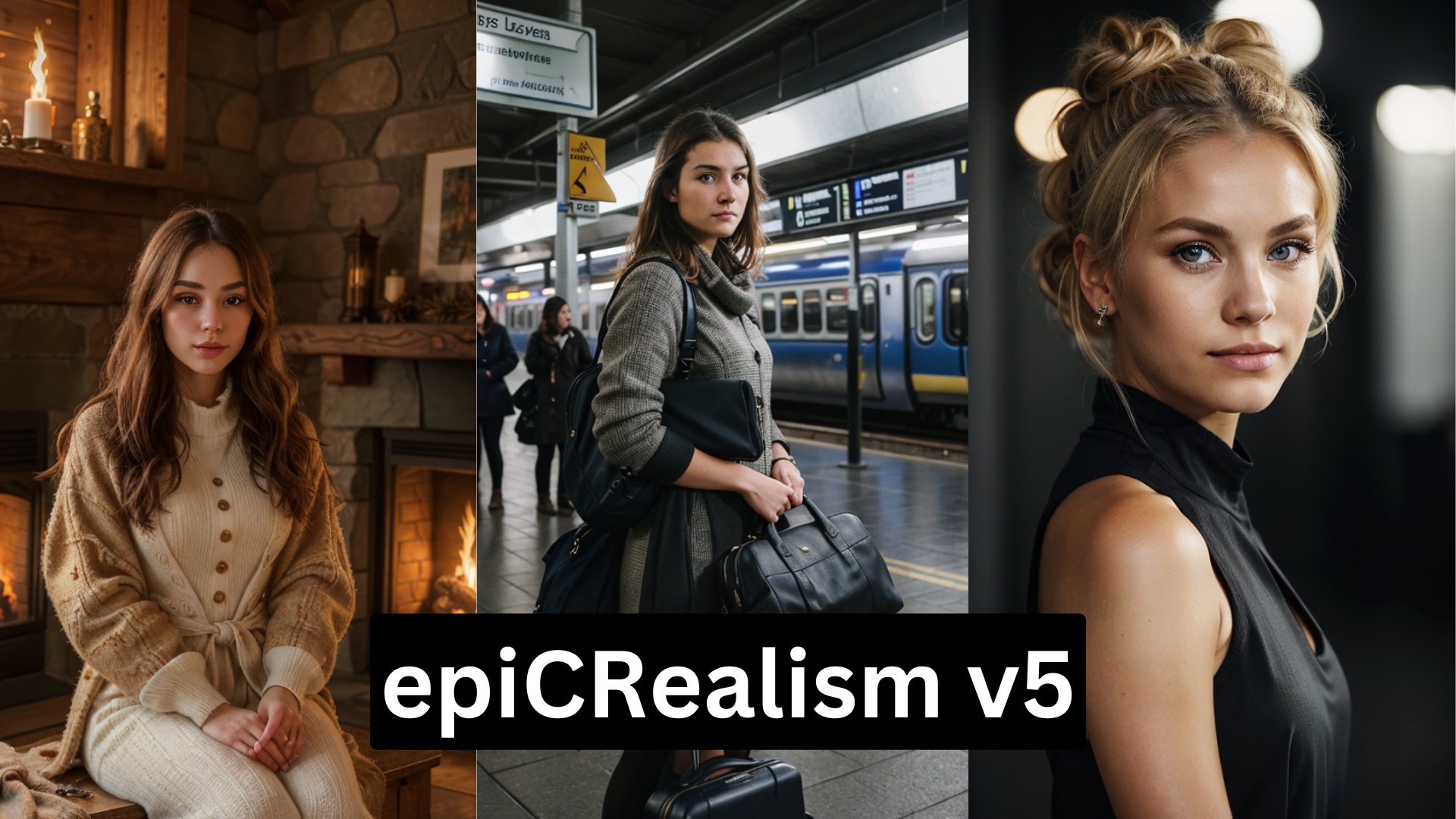
epicrealism-v5

9
The epicrealism-v5 model is a high-performance AI model created by the team at Pagebrain. It is part of a series of epiCRealism models, which also includes models like epiCRealism v2 and epiCPhotoGasm v1. The epicrealism-v5 model is built on a T4 GPU and uses various negative embeddings, enabling it to perform tasks like img2img, inpainting, and safety checking. Model inputs and outputs The epicrealism-v5 model accepts a variety of inputs, including an input prompt, an optional input image for img2img or inpainting tasks, and a seed value. It can generate multiple output images based on these inputs, with configurable parameters like guidance scale and number of inference steps. Inputs Prompt**: The text prompt that describes the desired output image. Image**: An optional input image for img2img or inpainting tasks. Seed**: A random seed value to control the generation process. Negative Prompt**: Specify things to not see in the output, using supported embeddings. Prompt Strength**: The strength of the prompt when using an input image. Outputs Images**: The generated output images, in the form of image URIs. Capabilities The epicrealism-v5 model is capable of generating high-quality, photorealistic images based on text prompts. It can also perform img2img and inpainting tasks, allowing users to modify existing images or fill in missing areas. The model includes a safety checker to help filter out potentially unsafe or inappropriate content. What can I use it for? The epicrealism-v5 model can be useful for a variety of creative and commercial applications, such as concept art, product visualization, and photo editing. Its img2img and inpainting capabilities make it particularly well-suited for tasks like restoring old or damaged photos, adding elements to existing images, or creating photo-realistic visualizations of products or designs. Things to try One interesting aspect of the epicrealism-v5 model is its ability to generate highly detailed and realistic images while avoiding common pitfalls like distorted anatomy or uncanny facial features. Try experimenting with prompts that describe specific, detailed scenes or objects, and see how the model handles the challenge. You can also try using the img2img and inpainting features to enhance or modify existing images in creative ways.
Updated 9/18/2024
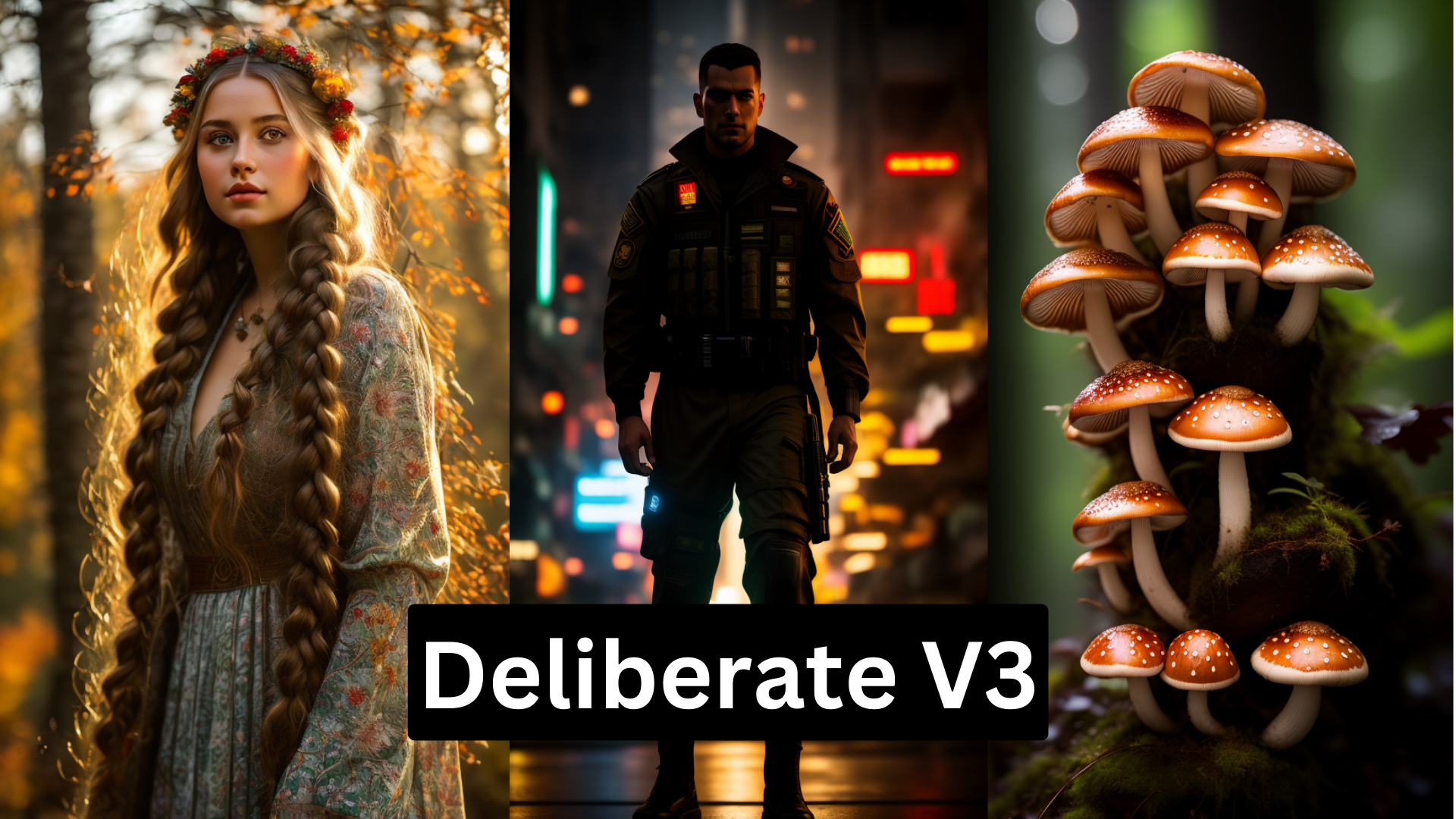
deliberate-v3

8
The deliberate-v3 model is a powerful AI model developed by pagebrain. It shares similar capabilities with other models in pagebrain's lineup, such as dreamshaper-v8, epicphotogasm-v1, epicrealism-v4, realistic-vision-v5-1, and epicrealism-v5. These models leverage a T4 GPU, negative embeddings, img2img, inpainting, safety checker, KarrasDPM, and pruned fp16 safetensor to deliver high-quality, safe image generation results. Model inputs and outputs The deliberate-v3 model accepts a variety of inputs, including a prompt, an optional input image for img2img or inpainting, and additional parameters like seed, width, height, guidance scale, and more. The model then generates one or more output images based on the provided inputs. Inputs Prompt**: The text prompt that describes the desired image. Image**: An optional input image for img2img or inpainting mode. Mask**: An optional input mask for the inpainting mode, where black areas will be preserved and white areas will be inpainted. Seed**: The random seed to use for generating the output image(s). Width and Height**: The desired width and height of the output image(s). Negative Prompt**: Specific things to avoid in the output image. Prompt Strength**: The strength of the prompt when using an init image. Num Inference Steps**: The number of denoising steps to perform. Guidance Scale**: The scale for classifier-free guidance. Safety Checker**: Whether to enable the safety checker to filter out potentially unsafe content. Outputs Image(s)**: One or more generated images based on the provided inputs. Capabilities The deliberate-v3 model is capable of generating high-quality, realistic images based on text prompts. It can also perform img2img and inpainting tasks, allowing users to refine or modify existing images. The model's safety checker helps ensure the generated content is appropriate and does not contain harmful or explicit material. What can I use it for? The deliberate-v3 model can be used for a variety of creative and practical applications. For example, you could use it to generate concept art, product visualizations, landscapes, portraits, and more. The img2img and inpainting capabilities also make it useful for photo editing and manipulation tasks. Additionally, the model's safety features make it suitable for use in commercial or professional settings where content filtering is important. Things to try Some interesting things to try with the deliberate-v3 model include experimenting with different prompts and negative prompts to see how they affect the generated output, using the img2img and inpainting features to enhance or modify existing images, and combining the model with other tools or techniques for more complex projects. As with any AI model, it's important to carefully review the generated content and ensure it aligns with your intended use case.
Updated 9/18/2024

realistic-vision-v5-1

6
The realistic-vision-v5-1 model is a text-to-image AI model developed by the creator pagebrain. It is similar to other pagebrain models like dreamshaper-v8 and majicmix-realistic-v7 that use negative embeddings, img2img, inpainting, and a safety checker. The model is powered by a T4 GPU and utilizes KarrasDPM for its scheduler. Model inputs and outputs The realistic-vision-v5-1 model accepts a text prompt, an optional input image, and various parameters to control the generation process. It outputs one or more generated images that match the provided prompt. Inputs Prompt**: The text prompt describing the image you want to generate. Negative Prompt**: Specify things you don't want to see in the output, such as "bad quality, low resolution". Image**: An optional input image to use for img2img or inpainting mode. Mask**: An optional mask image to specify areas of the input image to inpaint. Seed**: A random seed to use for generating the image. Leave blank to randomize. Width/Height**: The desired size of the output image. Num Outputs**: The number of images to generate (up to 4). Guidance Scale**: The strength of the guidance towards the text prompt. Num Inference Steps**: The number of denoising steps to perform. Safety Checker**: Toggle whether to enable the safety checker to filter out potentially unsafe content. Outputs Generated Images**: One or more images matching the provided prompt. Capabilities The realistic-vision-v5-1 model is capable of generating highly realistic and detailed images from text prompts. It can also perform img2img and inpainting tasks, allowing you to manipulate and refine existing images. The model's safety checker helps filter out potentially unsafe or inappropriate content. What can I use it for? The realistic-vision-v5-1 model can be used for a variety of creative and practical applications, such as: Generating realistic illustrations, portraits, and scenes for use in art, design, or marketing Enhancing and editing existing images through img2img and inpainting Prototyping and visualizing ideas or concepts described in text Exploring creative prompts and experimenting with different text-to-image approaches Things to try Some interesting things to try with the realistic-vision-v5-1 model include: Exploring the limits of its realism by generating highly detailed natural scenes or technical diagrams Combining the model with other tools like GFPGAN or Real-ESRGAN to enhance and refine the output images Experimenting with different negative prompts to see how the model handles requests to avoid certain elements or styles Iterating on prompts and adjusting parameters like guidance scale and number of inference steps to achieve specific visual effects
Updated 9/18/2024

cyberrealistic-v3-3

6
cyberrealistic-v3-3 is an AI model developed by pagebrain that aims to generate highly realistic and detailed images. It is similar to other models like dreamshaper-v8, realistic-vision-v5-1, deliberate-v3, epicrealism-v2, and epicrealism-v4 in its use of a T4 GPU, negative embeddings, img2img, inpainting, safety checker, KarrasDPM, and pruned fp16 safetensor. Model inputs and outputs cyberrealistic-v3-3 takes a variety of inputs, including a text prompt, an optional input image for img2img or inpainting, a seed for reproducibility, and various settings to control the output. The model can generate multiple images based on the provided inputs. Inputs Prompt**: The text prompt that describes the desired image. Image**: An optional input image that can be used for img2img or inpainting. Seed**: A random seed value to ensure reproducible results. Width and Height**: The desired width and height of the output image. Num Outputs**: The number of images to generate. Guidance Scale**: The scale for classifier-free guidance, which affects the balance between the prompt and the model's learned priors. Num Inference Steps**: The number of denoising steps to perform during image generation. Negative Prompt**: Text that specifies things the model should avoid generating in the output. Prompt Strength**: The strength of the input image's influence on the output when using img2img. Safety Checker**: A toggle to enable or disable the model's safety checker. Outputs Images**: The generated images that match the provided prompt and other input settings. Capabilities cyberrealistic-v3-3 is capable of generating highly realistic and detailed images based on text prompts. It can also perform img2img and inpainting, allowing users to refine or edit existing images. The model's safety checker helps ensure the generated images are appropriate and do not contain harmful content. What can I use it for? cyberrealistic-v3-3 can be used for a variety of creative and practical applications, such as digital art, product visualization, architectural rendering, and scientific illustration. The model's ability to generate realistic images from text prompts can be particularly useful for creative professionals and hobbyists who want to bring their ideas to life. Things to try With cyberrealistic-v3-3, you can experiment with different prompts to see the range of images the model can generate. Try combining prompts with specific details or using the img2img or inpainting features to refine existing images. Adjust the various settings, such as guidance scale and number of inference steps, to see how they affect the output. Explore the negative prompt feature to see how you can guide the model away from generating unwanted content.
Updated 9/18/2024

epicrealism-v4

5
The epicrealism-v4 model is a powerful AI model developed by Replicate creator pagebrain. It is part of a series of epiCRealism and epiCPhotoGasm models, which are designed to generate high-quality, realistic-looking images. The epicrealism-v4 model shares similar capabilities with other models in this series, such as dreamshaper-v8, realistic-vision-v5-1, and majicmix-realistic-v7, all of which are also created by pagebrain. Model inputs and outputs The epicrealism-v4 model accepts a variety of inputs, including text prompts, input images for img2img or inpainting, and various parameters to control the output, such as seed, width, height, and guidance scale. The model can generate multiple output images in response to a single prompt. Inputs Prompt**: The input text prompt that describes the desired image. Negative Prompt**: Specifies things to not see in the output, using supported embeddings. Image**: An input image for img2img or inpainting mode. Mask**: An input mask for inpaint mode, where black areas will be preserved and white areas will be inpainted. Seed**: The random seed to use for generating the output. Width and Height**: The desired width and height of the output image. Num Outputs**: The number of images to generate. Prompt Strength**: The strength of the prompt when using an init image. Num Inference Steps**: The number of denoising steps to perform. Guidance Scale**: The scale for classifier-free guidance. Safety Checker**: A toggle to enable or disable the safety checker. Outputs Output Image**: The generated image(s) that match the input prompt and parameters. Capabilities The epicrealism-v4 model is capable of generating high-quality, realistic-looking images based on text prompts. It can also perform img2img and inpainting tasks, allowing users to generate new images from existing ones or fill in missing parts of an image. The model incorporates various techniques, such as negative embeddings, to improve the quality and safety of the generated outputs. What can I use it for? The epicrealism-v4 model is well-suited for a variety of creative and practical applications. Users can leverage its capabilities to generate realistic-looking images for marketing, design, and art projects. It can also be used for tasks like photo restoration, object removal, and image enhancement. Additionally, the model's safety features make it suitable for use in commercial and professional settings. Things to try One interesting aspect of the epicrealism-v4 model is its ability to incorporate negative embeddings, which can help to avoid the generation of undesirable content. Users can experiment with different negative prompts to see how they affect the output and explore ways to fine-tune the model for their specific needs. Additionally, the model's img2img and inpainting capabilities allow for a wide range of creative possibilities, such as combining existing images or filling in missing elements to create unique and compelling compositions.
Updated 9/18/2024
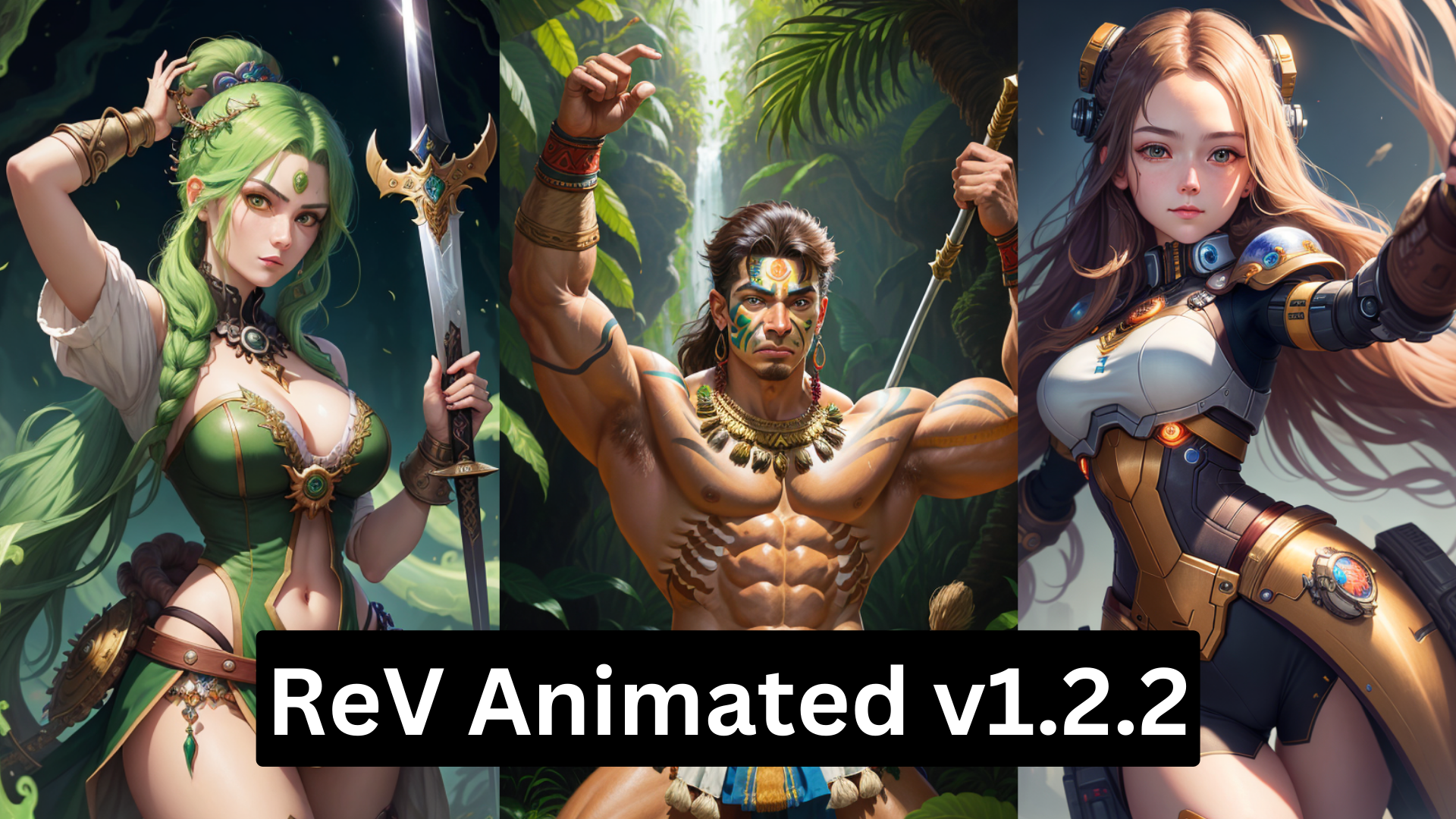
rev-animated-v1-2-2

5
rev-animated-v1-2-2 is a powerful text-to-image AI model created by pagebrain. It is capable of generating high-quality images from text prompts, as well as performing img2img and inpainting tasks. The model shares several similarities with other diffusion-based models like majicmix-realistic-v7, utilizing negative embeddings, a safety checker, and the KarrasDPM scheduler. What sets rev-animated-v1-2-2 apart is its focus on generating more animated, expressive, and surreal imagery compared to its more realistic counterparts. Model inputs and outputs rev-animated-v1-2-2 accepts a text prompt, an optional input image for img2img or inpainting, and a variety of parameters to control the output, such as the number of images, guidance scale, and number of inference steps. The model generates one or more high-resolution images (up to 1024x768 or 768x1024) in response to the provided prompt and inputs. Inputs Prompt**: The text prompt describing the desired image Image**: An optional input image for img2img or inpainting tasks Mask**: An optional mask for inpainting, where black areas will be preserved and white areas will be inpainted Seed**: A random seed value to control the output randomness Width/Height**: The desired width and height of the output image Num Outputs**: The number of images to generate (up to 4) Guidance Scale**: The scale for classifier-free guidance, affecting the level of adherence to the prompt Num Inference Steps**: The number of denoising steps to perform during the generation process Negative Prompt**: A prompt specifying things to avoid in the output image Outputs Image**: One or more high-resolution images generated in response to the provided prompt and inputs Capabilities rev-animated-v1-2-2 excels at generating surreal and imaginative images with a unique, almost animated or illustrative style. The model can seamlessly incorporate various elements, from fantastical creatures and landscapes to abstract and dreamlike compositions. Its ability to handle img2img and inpainting tasks allows for further refinement and manipulation of existing images. What can I use it for? rev-animated-v1-2-2 is well-suited for a variety of creative applications, such as concept art, illustration, and visual storytelling. The model's versatility makes it a valuable tool for artists, designers, and anyone looking to bring their imaginative ideas to life. Additionally, the model's safety features and ability to generate high-quality images make it a compelling choice for commercial projects or content creation. Things to try Experiment with different prompts to see the range of styles and subjects the model can produce. Try combining the model with other tools like GFPGAN or Real-ESRGAN to further enhance the quality and realism of the generated images. Additionally, explore the model's img2img and inpainting capabilities to seamlessly integrate your own artistic elements or refine existing images.
Updated 9/18/2024